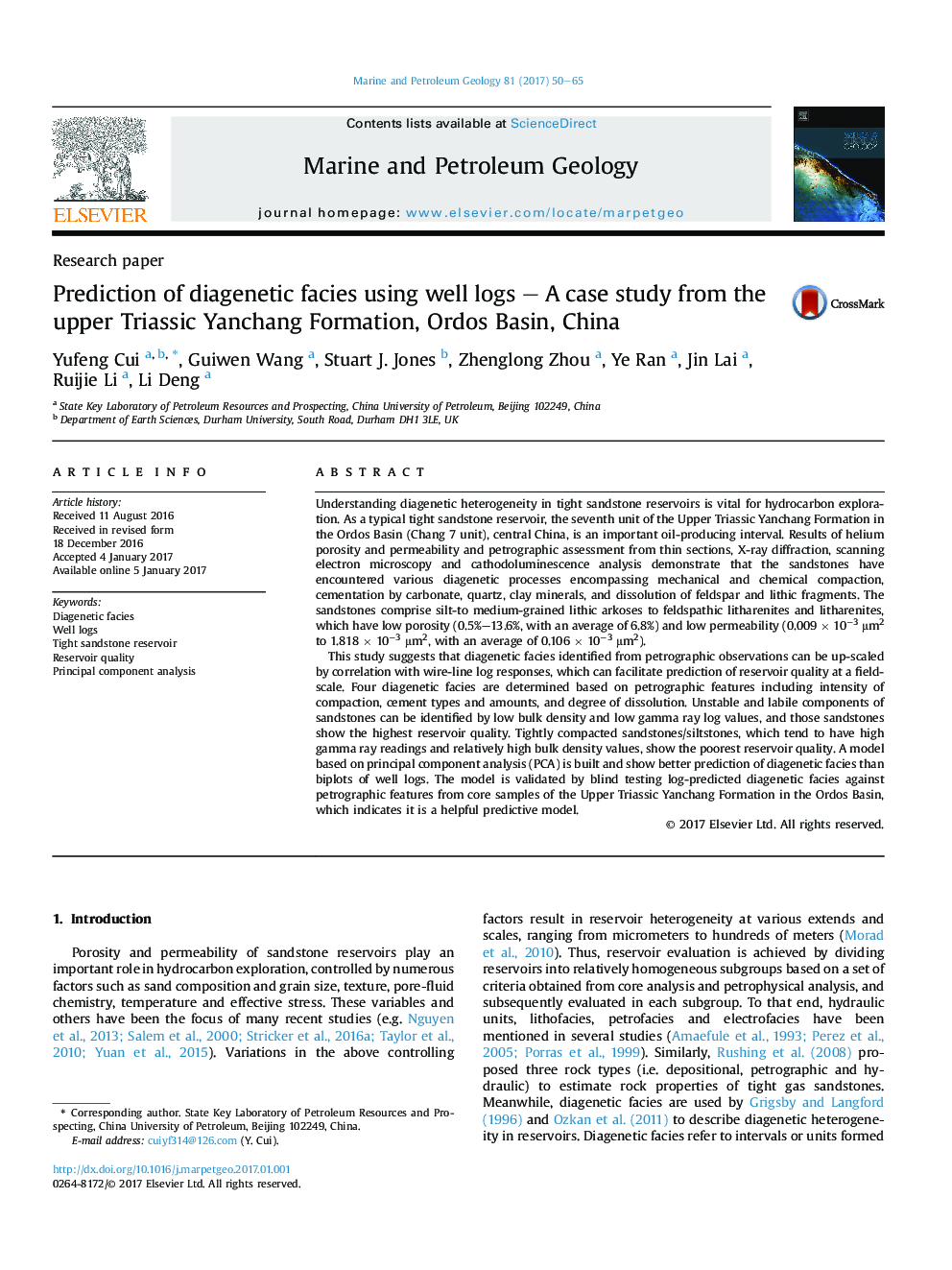| Article ID | Journal | Published Year | Pages | File Type |
|---|---|---|---|---|
| 5782173 | Marine and Petroleum Geology | 2017 | 16 Pages |
Abstract
This study suggests that diagenetic facies identified from petrographic observations can be up-scaled by correlation with wire-line log responses, which can facilitate prediction of reservoir quality at a field-scale. Four diagenetic facies are determined based on petrographic features including intensity of compaction, cement types and amounts, and degree of dissolution. Unstable and labile components of sandstones can be identified by low bulk density and low gamma ray log values, and those sandstones show the highest reservoir quality. Tightly compacted sandstones/siltstones, which tend to have high gamma ray readings and relatively high bulk density values, show the poorest reservoir quality. A model based on principal component analysis (PCA) is built and show better prediction of diagenetic facies than biplots of well logs. The model is validated by blind testing log-predicted diagenetic facies against petrographic features from core samples of the Upper Triassic Yanchang Formation in the Ordos Basin, which indicates it is a helpful predictive model.
Related Topics
Physical Sciences and Engineering
Earth and Planetary Sciences
Economic Geology
Authors
Yufeng Cui, Guiwen Wang, Stuart J. Jones, Zhenglong Zhou, Ye Ran, Jin Lai, Ruijie Li, Li Deng,
